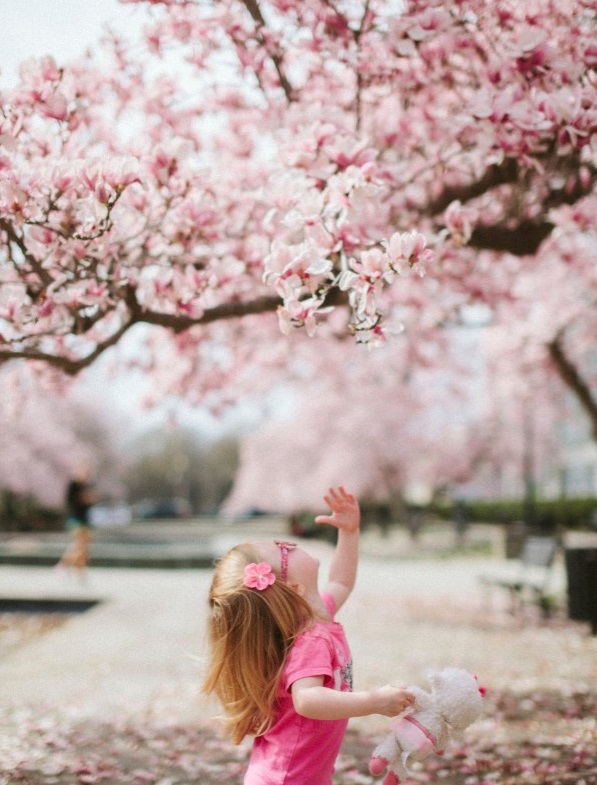A child’s sight is essential to their development. We must ensure that no sight defects will hinder our children’s development. Whether rehabilitation or correction –every problem has a solution.
 STAGES IN THE DEVELOPMENT OF SIGHT
STAGES IN THE DEVELOPMENT OF SIGHT
The first week of life
The baby sees the world in black and white and his field of vision is very narrow, approximately 1/20. Everything is blurred and the baby has difficulty in judging distances.
Two months
Vision is 1/20 and child has a 60 degree field of vision and can distinguish between red and green. A slight squint may develop but this isn’t something to worry about because it quickly disappears as the child grows older.
Four months
Vision is 1/15 and the field of vision is 110 degrees. The child can distinguish small objects that are a reasonable distance away from them.
Six months – One year
The child’s vision is now 1/10, their field of vision is 180 degrees and they can now distinguish between all colors. As field of vision gradually widens and the child begins to walk, so they are better able to judge distances.
Age one to six
Vision continues to improve and should reach 2/10 by the age of two and 4/10 by the age of four. By the age of six, the child’s sight should be fully developed (10/10) and almost identical to that of an adult.
Age 15
Vision reaches its peak at 14/10. The adolescent is at the height of their visual ability which is equal to an adult’s sight.
Sharpness of Vision: a term that refers to the ability to see very small details.
 THE DIAGNOSIS
THE DIAGNOSIS
Early diagnosis is critical. Up until 2 and half years old, the child can usually achieve perfect sight quickly. After this age, it’s harder to get the required results.
So, we recommend taking a baby for an eye test under the following circumstances:
If they have a squint for longer and longer periods of time.
If they don’t respond to movement above them and keeps looking in the same direction and seems to be avoiding light.
If they seem slow or don’t respond to things going on around them and if they often wrinkle their brow.
If they often rub their eyes.
At later stages, reading with their face close to the book, learning difficulties or frequent headaches could also be warning signs.
 HOW TO CHECK AND PROTECT YOUR CHILD’S EYESIGHT
HOW TO CHECK AND PROTECT YOUR CHILD’S EYESIGHT
1- Wash the child’s eyes with wet cotton wool with the eyelids closed.
2-Don’t let soap or shampoo suds get into the child’s eyes.
3- Protect the child’s eyes from all sharp objects and toys with sharp edges that could cause deep cuts.
4- If the child complains that something is bothering or hurting their eyes (if, for example, chemicals have gotten into the eye) they should be treated immediately as follows: wash the effected eye with tap water and then clean with lukewarm water. Take the child for a medical examination as soon possible.
5-If sand, grit or small stones have penetrated the child’s eye, we recommend trying to remove the dirt with wet cotton wool or to seek medical treatment immediately.
6-If your child complains that their eyes hurt, whether when reading or watching television, take them for an eye check to see if they need glasses. In any event, it’s important to make sure that there is enough light when they’re reading.
7-When in the pool, protect your child’s eyes with swimming goggles.
8-Healthy food contributes to good sight:
- Vitamin A, found in green and yellow vegetables, in fruit, meat, eggs, milk (not skimmed) and cheeses.
- Let’s not forget carrots – a vital vegetable that benefits the sight due to the Carotenoid it contains which transforms into vitamin A when eaten by the child.
9-Protect your children from the sun.
The sun’s ultra violet radiation is very dangerous
The eyes, like the skin, are exposed to ultra violet radiation.
The child’s eyes are more sensitive than an adults.
The lighter the eyes, so the greater the sensitivity to dazzling.
To provide the child with maximum protection from the sun, two things are vital: sunglasses with appropriate lenses and a hat that protects the eyes from ultra violet radiation.
Protecting your child from the sun is critical!
10-Finally, monitor and protect your children’s eyes all the time, right up until they finish school – it’s one of the most important things you have to do!!!

